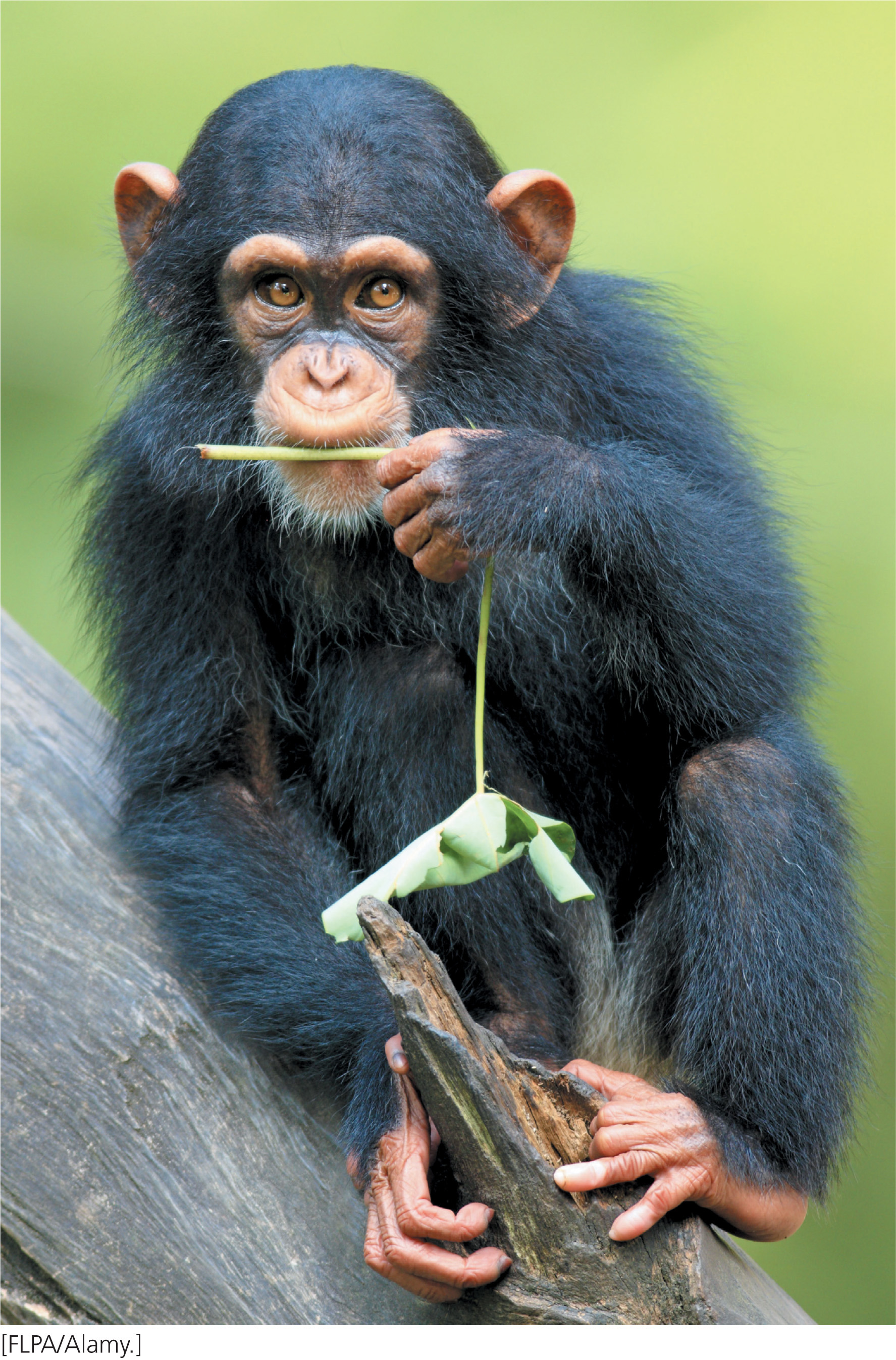Taster Genes in Spitting Apes
Almost every student of biology knows about the taster test. The teacher passes out small pieces of paper impregnated with a compound called phenylthiocarbamide (PTC), and the students, following the teacher’s instructions, put the paper in their mouths. The reaction is always the same: a number of the students immediately spit the paper out, repelled by the bitter taste of PTC. A few students, however, can’t taste the PTC and continue to suck on the paper, wondering what all the spitting is about. Variation among individuals in a trait such as the ability to taste PTC is termed a polymorphism.

The ability to taste PTC is inherited as an autosomal dominant trait in humans. The frequencies of taster and nontaster alleles have been estimated in hundreds of human populations worldwide. Almost all populations have both tasters and nontasters; the frequency of the two alleles varies widely.
PTC is not found in nature, but the ability to taste it is strongly correlated with the ability to taste other naturally occurring bitter compounds, some of which are toxic. The ability to taste PTC has also been linked to dietary preferences and may be associated with susceptibility to certain diseases, such as thyroid deficiency. These observations suggest that natural selection has played a role in the evolution of the taster trait. Some understanding of the evolution of the taster trait was gained when well-known population geneticist Ronald A. Fisher and his colleagues took a trip to the zoo in 1939.
Fisher wondered whether other primates also might have the ability to taste PTC. To answer this question, he prepared some drinks with different levels of PTC and set off for the zoo with his friends, fellow biologists Edmund (E. B.) Ford and Julian Huxley. At the zoo, the PTC-laced drinks were offered to eight chimpanzees and one orangutan. Fisher and his friends were initially concerned that they might not be able to tell whether the apes could taste the PTC. That concern disappeared, however, when the first one sampled the drink and immediately spat on Fisher. Of the eight chimpanzees tested, six were tasters and two were nontasters.
The observation that chimpanzees and humans both have the PTC taste polymorphism led Fisher and his friends to assume that the polymorphism arose in a common ancestor of humans and chimpanzees, which passed it on to both species. However, they had no way to test their hypothesis. Sixty-five years later, geneticists armed with the latest molecular genetic techniques were able to determine the origin of the PTC taste polymorphism and test the hypothesis of Fisher and his friends.
Molecular studies revealed that our ability to taste PTC is controlled by alleles at the TAS2R38 locus, a 1000-bp gene found on chromosome 7. This locus encodes receptors for bitter compounds and is expressed in the cells of our taste buds. One common allele encodes a receptor that allows the ability to taste PTC; an alternative allele encodes a receptor that does not respond to PTC.
Recent research has demonstrated that PTC taste sensitivity in chimpanzees also is controlled by alleles at the TAS2R38 locus. However, much to the investigators’ surprise, the taster alleles in humans and chimpanzees are not the same at the molecular level. In the human taster and nontaster alleles, nucleotide differences at three positions affect which amino acids are present in the taste-receptor protein. In chimpanzees, none of these nucleotide differences are present. Instead, a mutation in the initiation codon produces the nontaster allele. This substitution eliminates the normal initiation codon, and the ribosome initiates translation at an alternative downstream initiation codon, resulting in the production of a shortened protein receptor that fails to respond to PTC.
What these findings mean is that Fisher and his friends were correct that humans and chimpanzees both have PTC taste polymorphism but were incorrect in their hypothesis about its origin: humans and chimpanzees independently evolved the PTC taste polymorphism.
This chapter is about the genetic basis of evolution. As illustrated by the PTC taster polymorphism, evolutionary genetics has a long history but has been transformed in recent years by the application of powerful molecular genetic techniques. In Chapter 25, we considered the evolutionary forces that bring about change in the allelic frequencies of a population: mutation, migration, genetic drift, and selection. In this chapter, we examine some specific ways that these forces shape the genetic makeup of populations and bring about long-term evolution. We begin by looking at how the process of evolution depends on genetic variation and how genetic variation is studied in natural populations. We then turn to the evolutionary changes that bring about the appearance of new species and how evolutionary histories (phylogenies) are constructed. We end the chapter by taking a look at patterns of evolutionary change at the molecular level.